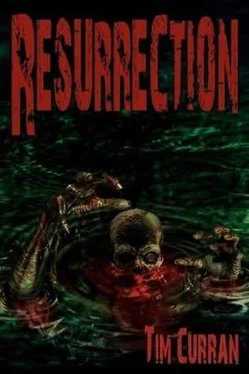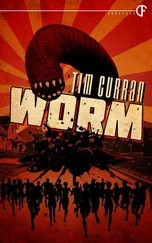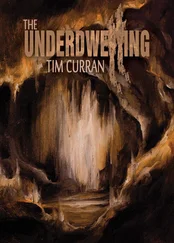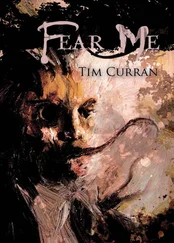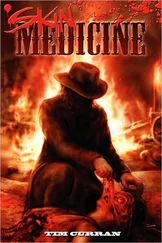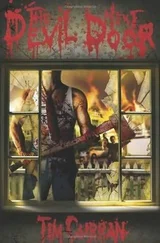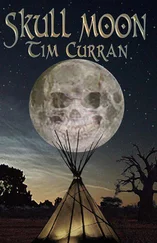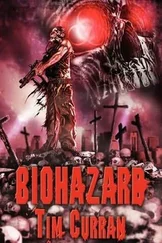Tim Curran - Resurrection
Здесь есть возможность читать онлайн «Tim Curran - Resurrection» весь текст электронной книги совершенно бесплатно (целиком полную версию без сокращений). В некоторых случаях можно слушать аудио, скачать через торрент в формате fb2 и присутствует краткое содержание. Жанр: Ужасы и Мистика, на английском языке. Описание произведения, (предисловие) а так же отзывы посетителей доступны на портале библиотеки ЛибКат.
- Название:Resurrection
- Автор:
- Жанр:
- Год:неизвестен
- ISBN:нет данных
- Рейтинг книги:5 / 5. Голосов: 1
-
Избранное:Добавить в избранное
- Отзывы:
-
Ваша оценка:
- 100
- 1
- 2
- 3
- 4
- 5
Resurrection: краткое содержание, описание и аннотация
Предлагаем к чтению аннотацию, описание, краткое содержание или предисловие (зависит от того, что написал сам автор книги «Resurrection»). Если вы не нашли необходимую информацию о книге — напишите в комментариях, мы постараемся отыскать её.
Resurrection — читать онлайн бесплатно полную книгу (весь текст) целиком
Ниже представлен текст книги, разбитый по страницам. Система сохранения места последней прочитанной страницы, позволяет с удобством читать онлайн бесплатно книгу «Resurrection», без необходимости каждый раз заново искать на чём Вы остановились. Поставьте закладку, и сможете в любой момент перейти на страницу, на которой закончили чтение.
Интервал:
Закладка:
“Enough,” Mitch finally said.
They got out of there, found another door in that maze of rooms that said MOLECULAR GENETICS/BIOENGINEERING above it. They all tensed at what that might be about. But they knew it was going to be bad, that if there was a nursery where these horrors were born, it would be in here.
They stepped through the door and found that there were a few lights on. Even so, the place was huge and shadowy. The ceiling had to be twenty feet high and the room itself was as big as the display floor of a car dealership, hundreds of feet square. Everywhere, there was machinery and tables crowded with laboratory equipment and microscopes and glass jars of specimens. But not only that but urns of human remains, casks of dried insects, stuffed animals, mummified limbs. The dusty remains of what looked to be very ancient cadavers crumbling on slabs. Huge glass vessels held pale limbs and eyes and internal organs floating in cloudy baths of serum…and many of them were moving, alive even though they couldn’t possibly be. There were entire corpses in huge glass tubes filled with fluids that reacted when Mitch and the others got near them, scratching at their prisons, their mouths opening and closing like they were trying to speak. Harry found the living head of a woman in a cask of pink liquid and Tommy found a vat of gray tissue that was undulating.
“What the fuck is this place?” Mitch finally said, stumbling madly down aisles of living specimens and chemical glassware.
There was no way he could know, no way any of them could know. Not really. They could not know nor guess that what they were seeing was an unthinkable combination of a witch’s workshop and a molecular bio lab, an alchemist’s laboratory and cellular biology research station. It was all these things. The intersection of cutting edge medical science and Medieval sorcery. This was a dissection room and a tissue lab, a cell physiology laboratory and a cabbalist’s shed. The meeting of the very old and the very new.
Here were dried snakes hanging from overhead and sectioned rats, presses and Athenors, cauldrons of decomposing animal matter and alchemist’s Pelicans with spidery tubes used for spirit production. Chemical furnaces and ovens, flasks and crucibles, alembics and retorts. All the workings of a Medieval alchemy lab?three-legged cauldrons and distillation apparatuses, bowls and clay jars, Liebig Condensers and receiver flasks, exotic glassware such as ampullas, crane’s bills, cucurbitas. Cementation boxes and fermentation chambers, scorifiers and aludels, bone-ash cupels and digestion vessels. Just a crowded esoteric menagerie of long-stemmed flasks and coiling spouts, ceramic pots and copper bowls, dried animals and bones and crematory ash and great charts of indecipherable figures. All of this crowded amongst tables of modern laboratory equipment, electron microscopes and centrifuges, dissection tables and chromatographs. Jars of petrified spiders were sandwiched in-between laptops and protein purification work stations. Embalmed human hands were flanked by pH meters, thermo baths, PCR machines, incubators and digital microscopes. Medieval sublimation alembics were attached to retorts and specimen jars, while to all sides were bones and feathers and staring human skulls. In the same room you could call up the spirits of the dead, you could do tissue culturing, DNA extraction, gene transfers, and protein purification.
“This is a goddamn madhouse,” Tommy said, bumping into a set of capillary DNA sequencers as he tried to avoid tripping over the snaking maze of a 13^th century distillation apparatus with condensers and tubing, flasks and cast iron pots, digesters for putrefaction studies. “A fucking madhouse.”
“You’re right,” a voice said out of the shadows. “That’s exactly what this is.”
Guns went up and a tall, thin man with silvery hair stepped out. He wasn’t the mad scientist they were expecting with a dirty lab coat and frizzy gray hair, but a neat and trim man in an expensive suit who looked more like a stockbroker than anything else.
“Now,” he said. “Are you here to seek vengeance for what has happened or do you want answers?”
The way they were feeling, vengeance sounded pretty good. But they weren’t after that and this guy looked positively harmless, sad really. He looked just worn and empty like maybe you could beat him to death with a hammer and he wouldn’t have even attempted to defend himself. He was offering them a look in his dark chest of secrets and they could not refuse.
“It doesn’t matter to me who you are,” he said to them. “I’m going to tell you what happened here. How this came about. Because today or tomorrow the Army will come in here and sterilize this entire place. No one and nothing will be left. The wheels are already turning.”
“And who are you?” Tommy put to him.
“I was, until five years ago, a professor of cellular biology at Stanford. My name is Robert Osborne, if that interests you. I came here five years ago after being contacted by the Army Medical Research Command on authorization of DARPA, the Defense Advanced Research Project Agency. They wanted to include me in an ongoing research program known as the ReGenesis Project.”
“And what was that about?” Tommy said. “Making zombies?”
If such a man as Osbourne could smile, could show some human warmth, he did it then. But it passed quickly enough. “Hardly. The aim of the project was an investigation into limb and tissue regeneration.”
Osbourne said that the U.S. military had been interested in this for years, the possible application of biological regeneration technology to battlefield injuries. Hence, soldiers with disfiguring injuries and the loss of limbs could be potentially made whole again.
“And how did you go about this…this project?” Mitch asked him.
“By studying Medieval alchemy and certain remains of a Seventeenth-century warlock named Alardus Weerden…”
15
The research, Osbourne explained, was initially begun back in the 1970’s from studies in the acceleration of the healing of battlefield wounds and burns. And from that, it was extrapolated that possibly entire limbs could be regrown. Flatworms, fish, and certain amphibians can regenerate internal organs, tissues, and limbs to a certain extent, but humans can only regrow selective tissues and organs…the liver, the blood, the outermost layer of skin.
“It’s really genetics,” Osbourne went on, “when you come down to it. All the information to regenerate any tissues or limbs is encoded in the genes if we could only activate it.”
He said the initial research was done on salamanders, which can regenerate limbs. The key was to unlock how they did it and apply this to higher vertebrates, namely, man. The theory was that these salamanders, when they experienced significant tissue loss or damage or the amputation of a limb, had a sort of signal response. In that, when the tissues were damaged, cells at the site released signals which activated regeneration on a cellular level. This response was much like that in a human embryo when genetic encoding allows it to grow an arm or a leg for the first time. The trick was to reestablish this marvelous mechanism.
They were all sitting in Osbourne’s office by this time, out of that blasphemous workshop of creation that made everyone a little uneasy.
“Project ReGenesis was aimed at understanding the molecular basis for regeneration,” he told them. “The first breakthrough was learning that when an amphibian regenerates a limb, there was not only healing at the sight to prevent blood loss, but no scarring. Humans always develop scar tissue at the wound sight. Amphibians heal, but they do not scar. You see, at the site of the missing limb, various specialized cells like skin and bone and nerve tissue immediately lose their identity and become generalized. Like stem cells or T-cells, they no longer know what kind of cells they are. This is called de-differentiation. The result is a mass of unspecialized cells called a blastema which proliferates at an amazing rate to form a limb bud. These cells take on specialized roles as the limb develops.”
Читать дальшеИнтервал:
Закладка:
Похожие книги на «Resurrection»
Представляем Вашему вниманию похожие книги на «Resurrection» списком для выбора. Мы отобрали схожую по названию и смыслу литературу в надежде предоставить читателям больше вариантов отыскать новые, интересные, ещё непрочитанные произведения.
Обсуждение, отзывы о книге «Resurrection» и просто собственные мнения читателей. Оставьте ваши комментарии, напишите, что Вы думаете о произведении, его смысле или главных героях. Укажите что конкретно понравилось, а что нет, и почему Вы так считаете.
